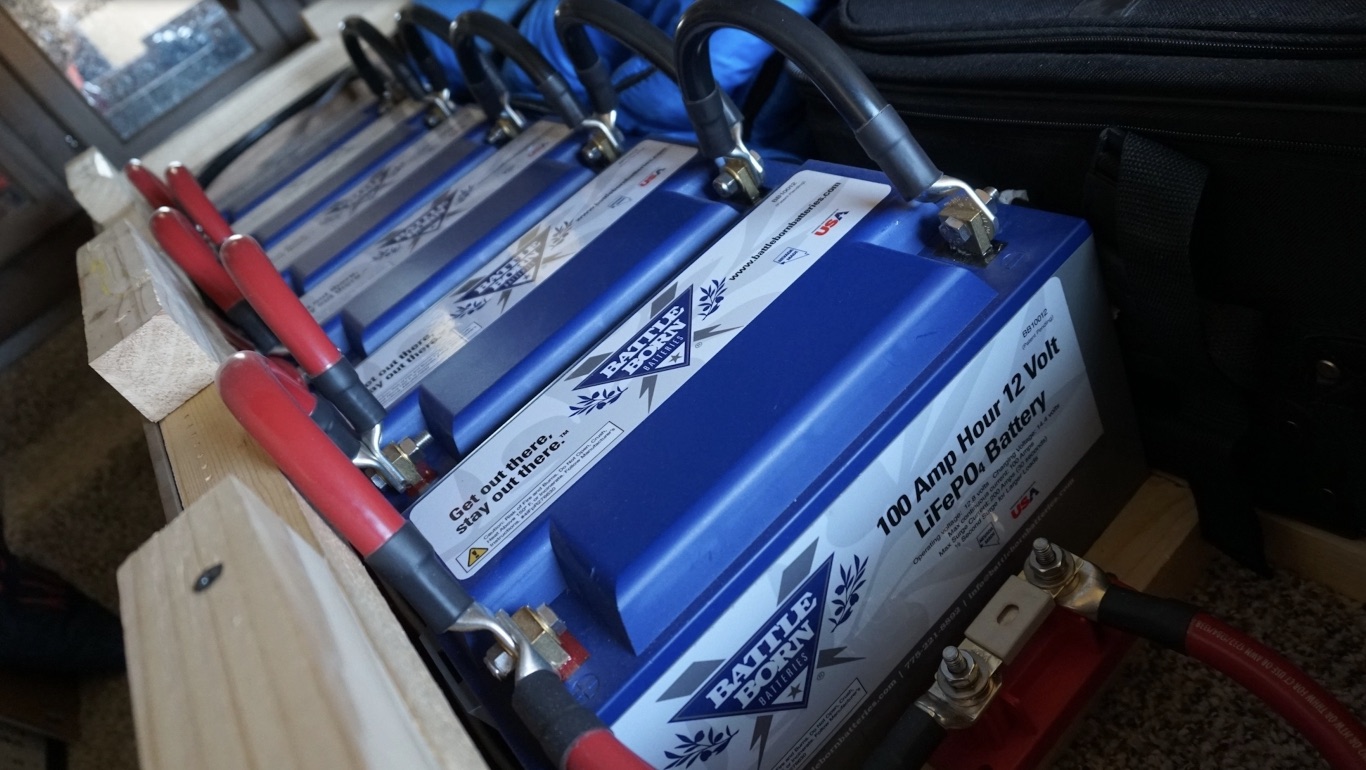When your motorhome’s batteries are depleted, it’s imperative to recharge them as soon as possible. With the exception of lithium-ion, other types of 12V batteries cannot go below 50% load or risk damaging the battery cell.
At this stage, it is important to determine the fastest way to charge RV batteries. However, your options for recharging your motorhome, trailer, or camper depend on your situation at the moment.
Also, if you use home lithium batteries when you need to charge them, faster charging is essential to get ahead of your current usage.

Fastest ways to charge RV batteries
Before we get into all the different ways to charge your road trailer batteries, there are a few guidelines you need to follow to ensure you and your battery charger are safe.
Before attempting to remove the batteries, you need to turn off the RV to avoid unexpected injury. You want to carry out the charging process in a safe place; you don’t want the area to be too wet or next to any metal objects.
Disconnect cables with extreme care. Once the battery is fully charged, disconnect the charger and store it properly.
Drip charging
Recharging RV batteries is a good way to keep them charged while in storage. There are two good reasons to remove batteries when you store your motorhome in a remote location.
One reason is that RV batteries are often targeted by thieves, even in supposedly safe storage. By taking them home, you are less likely to replace them when you pick up your motorhome.
Another reason is that you need to keep your RV’s batteries charged while your RV is in storage. Lead-acid RV batteries self-discharge at a rate of about 4% per week.
Once you bring them home, they are easy to connect to a battery charger or other charger.
This way, you can be sure that your batteries will be ready when you are ready to go. Recharging the deep cycle battery can take up to 10 hours, depending on how depleted it is.
Charging the RV battery with connecting cables
Can the deep cycle battery be charged with connection cables? You can do that, but it’s not the best idea.
If the starter battery in the motorhome is dead, getting a quick start from a friendly motorhome nearby is not difficult. It’s important to find a way to charge RV starter battery so you don’t get stuck somewhere.
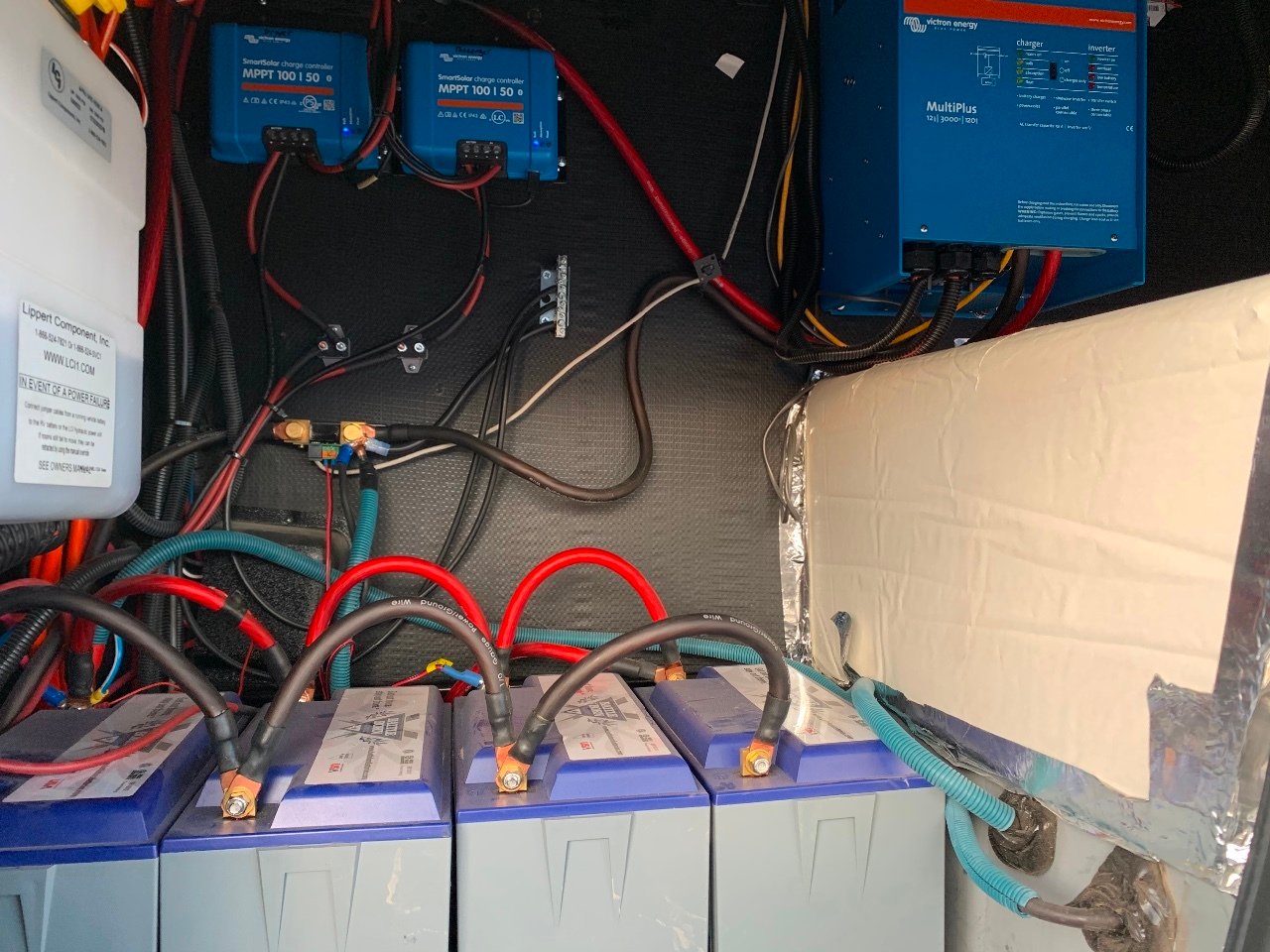
However, if you are planning to charge 12V house batteries with jumper cables, we would not recommend doing so.
The deep cycle batteries charges slowly. By the time house batteries come back to life, the charge source will itself be low on the battery bank and will regret its offer!
The RV jumper cables are designed primarily for starter house batteries, not 12 volt home RV batteries.
And if you’re thinking about using an RV starter battery to charge home batteries, that’s the same answer. You can get stuck where your van won’t start and you’re in an area that isn’t all that safe overnight.
Charging an RV battery with a generator
A generator will come in handy not only during periods of power outages; it can also be used to charge batteries.

It’s a quick fix for those times when you thought you packed a fully charged battery only to get to the campsite and find a dead one.
Many people prefer to charge their batteries with a generator over other methods; it is efficient and safe.
However, to be able to efficiently charge the battery from the generator, you will need a large generator. To use a generator to charge your batteries, here’s what you need to do.
- You want to make sure your generator is fully charged.
- Then turn on the RV battery and select a location to charge the RV battery.
- Then connect the battery to the positive and negative cables.
- Turning off all electrical devices will speed up battery charging.
- Now turn on the fully charged generator and connect your camper to it.
Then let the battery fully charge. Once the battery is fully charged, you can proceed and turn off the generator.
Solar panels
I’m completely converting my van to solar power. This can be very effective in sunny climates, and your batteries will recharge while you drive if your panels are attached to the roof.
To charge with solar power faster, you need the sun to hit the panels directly. So don’t park in the shade!
We attached our solar power to loops that were welded together, so we could rotate our solar power panels 90 degrees and catch the sun as it rises and sets. Thanks to this, our batteries charge much faster!
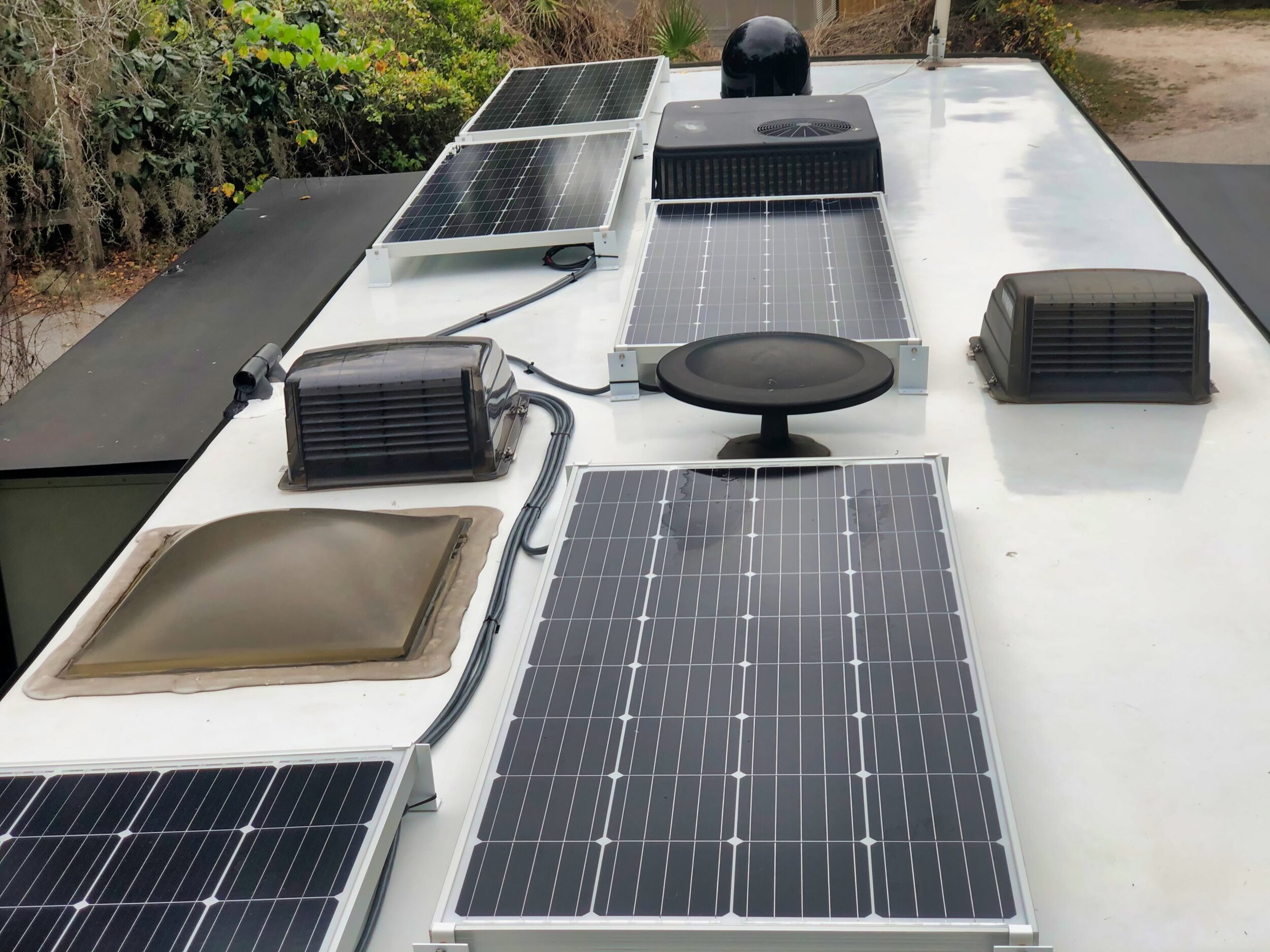
On a nice sunny day, solar panels can recharge our batteries in a few hours. During a rainy month, they may not be fully charged for several weeks (especially if we use the energy faster than the sun can replace it).
If you use your motorhome in a hot climate and want to stay in the shade, so you don’t overheat, you can purchase a collapsible solar panel to keep in your motorhome.
Take it out when you arrive at the campsite and then put it in the sun while you rest under a tree.
A decent battery is essential if you’re charging with a solar panel because you have no control over the weather.
Connect to shore power
Your motorhome is ideally equipped to keep your batteries charged while you are connected to the shore DC power or a generator. Simply plugging in your RV is the fastest way to charge your RV batteries. This is a good option if you store your rig at home or even on a camping trip.
When your RV is plugged in, the RV converter converts 120V AC to 12V DC power. Plugging in is by far the fastest and easiest way to charge your RV batteries.

Charge your motorhome’s battery with a converter
There are several ways to charge your RV battery with a converter: you can plug your RV into the mains through a 30 or 50 amp outlet at a campsite, or you can plug into a 15 amp outlet or a 20 amp outlet at home.
Each motorhome is equipped with 30 or 50 amp outlets that can be powered by the camping electrical network, also known as the shore network.
Depending on the size of your motorhome, you may have a 30 or 50 amp connection. The moment you connect your motorhome to shore power using the connectors, your batteries begin to charge and you can use a variety of appliances.
Now, for 15 and 20 amp sockets, you can connect to the shore network using a home extension cord in the same way as it connects to a 30 or 50 amp plug.
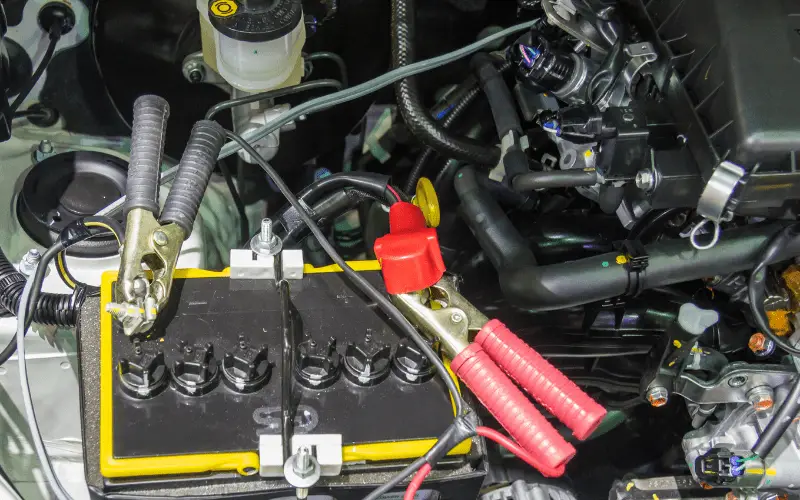
You can also remove the battery from the motorhome and charge it at home with a 12-volt charger. On the other hand, if you have a small motorhome, you can take it to your garage and install a 12-volt battery charger without removing the battery from the motorhome.
Charge batteries while towing an RV
For motorhome owners who have a tractor and a travel trailer, camper, or other tow vehicle objects, charging while driving is possible. It won’t be as fast as parking and charging from the shore, from a generator, or from home, but in a pinch, it’ll do.
Requires a reliable and powerful generator in the tractor (may need to be upgraded) and a 7-pin adapter as an auxiliary power source. This allows electric current to be distributed between the towing vehicle and the towed residential building while the vehicle is in motion.
Quick battery charging tips
Since RV batteries are needed when there are no external power sources available, it is essential to keep the batteries charged. Be sure to check your battery at least 48 hours before your trip so you have enough time to charge it and don’t have to worry about overcharging.
The basic charger can charge the battery in 20 to 48 hours, depending on the amperage and the selected charge rate. Batteries on their own won’t do much, but they will keep you going until you find a better power source.
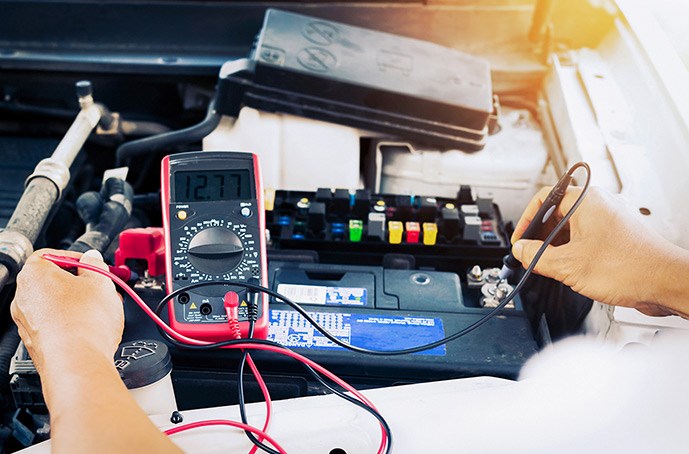
You should try to keep the batteries charged at all times to prevent them from being completely depleted. Discharged batteries take much longer to charge than partially charged batteries.
Most conventional RV batteries lose 4% of their charge each week. To keep your batteries from draining completely, you can invest in a compact charger (2 to 5 amps) to help keep them charged when not in use.
If you are not sure about the condition of your batteries, have them checked by a specialist. You can take your RV batteries to almost any repair shop or dealer and have them checked.
You can leave your battery on the charger (2 to 5 amps) to avoid having your battery completely drained in the future, and that’s a real time saver!
Make sure the battery plates are also immersed in liquid. If this is not the case, unscrew the plugs and fill the filler neck with distilled water on the top. After that, you will immediately want to charge the battery.
Attention! The battery contains a powerful acid, so wear gloves and goggles to protect yourself when filling the battery with distilled water. If you are not comfortable doing it yourself, you can contact a professional in a repair shop.
How long does it take to charge RV batteries?
The time it takes to charge your battery depends entirely on your charger and the size of the battery because it takes less time to drain the battery than it does to charge it, so every time you recharge your battery you need to be patient.
If you only have a converter, the battery can only charge at 3 to 5 amps, which can take several hours to fully charge the battery. The most expensive chargers can deliver up to 30 amps of charge, while others have more than 100 amps.
Also, find out how long does it take to charge an RV battery with a truck in this article.
FAQ
Do RV batteries charge when plugged into shore power?
Fortunately, the answer is yes. Your RV house batteries will charge while it is plugged into shore power. Your RV battery will charge when an external power source is connected and providing power to your RV.
Can I charge my RV battery while it is connected?
You can charge the battery while it is still inside the car or if it has been removed, either method is fine.
What keeps draining my RV battery?
Sulfation, parasitic loads, self-discharging, overcharging, undercharging, and lack of maintenance are the usual suspects of battery death, but they are all relatively easy to prevent with regular attention and smart battery charging.
Why are my RV batteries dying so fast?
This is usually caused by human error (incorrect use of the charger) or the absence of a properly working alternator to regulate the charge of the battery. Using the wrong charging voltage or leaving the charger connected to the battery for too long.
Do I need a generator if I plan to use shore power?
As you travel around the area, you may notice campers discussing “shore energy”.
You don’t need a generator if you plan to use shore power. While shore power isn’t always guaranteed at every campsite, it’s a great way to recharge your RV’s batteries and often enjoy the power without the limitations of many generators.
Summary
There are many factors that affect the charging speed of RV batteries. Some of these factors are simply out of our control. Make sure you plan ahead to avoid getting stuck without power when it matters and remember that your batteries should be above 50% if they’re not lithium batteries.
Generally speaking, you want to set aside a good day to recharge your batteries if they’re low, so don’t just turn them on for 20 minutes and think you’re ready to go!
I hope you found this article useful, and I wish you many happy adventures in your motorhome!
Find out How to charge phone while camping without electricity in my new article.

My name is Olivia Kellison. I have been camping with friends and on my own for a long time. For me, camping is a great way to escape everyday life’s chaos. I started this blog because I have always had a passion for the great outdoors, and here I am gladly sharing what I know with other outdoor enthusiasts. It does not matter whether you are an experienced adventurer, or just planning your first trip, my blog will be of great help to you.

